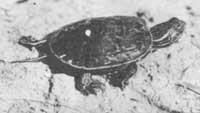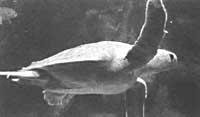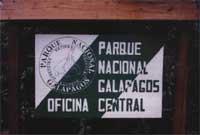When sea turtles are disembarked...
1991/10/01 Elosegi, Iker Iturria: Elhuyar aldizkaria
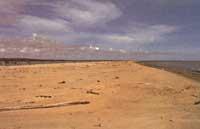
50 meters from us comes another turtle from the water. This is the seventeenth we have seen in an hour.
This sea turtle, two meters long and about 500 kilos, is a turtle that is very clumsy on land!
Get ahead with the front legs like a rowing. He usually gives a few paddles and rest a moment before moving back.
What makes this reptile so well adapted to marine life disembark like this?
Its only goal is to lay eggs... Another curiosity about evolution is that after leaving the water and remaining on land for 70 million years, sea turtles returned to the sea… but they continue to land!
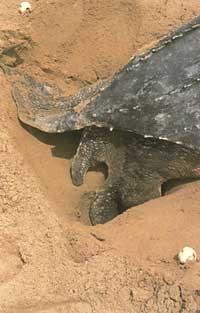
Our turtle has chosen the place where to climb about ten minutes on the beach and lay the eggs. It is located 10 meters from the water, right in an area without danger of sinking for the next tide (the excessively depressed egg destroys the waters). He has chosen the place and has done all things programmed to spawn:
First, with the legs above, your environment has prepared your routine by waving forcefully a quarter of an hour. The beach begins to pierce with the back legs like shovels: In 15 minutes he has made a hole with boot shape of 80 centimeters. You have stopped drilling when you have not felt anything under the tip of your leg. Now the time has come for its implementation. One leg covers the inlet of the hole and, three or four to four, starts laying the eggs.
They are 7 centimeters in diameter and white. Being soft (they have no shell like bird eggs), falling into the hole does not harm them. In all laying there are rare and small eggs. Being these free of buds, they do not give embryos in the section. Its role in the insulation of the hole or in the formation of a wind bag is unknown.
An average of 80 eggs per laying (of which 20 are rare). Leave the setting and with the back legs cover the hole with sand for ten minutes. Then, as at first, his environment has hit again for 20 minutes. It is impossible to find where the hole is due to this type of sand start!
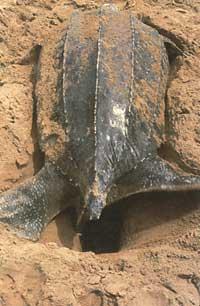
It is five and a half in the morning, the tide is very high and the first rays of dawn illuminate the beach.
Our turtle has dragged the meters back to the water and has finally entered its element that it had left for an hour and a half. Although his abandonment has cost him a lot, it seems that with a new dive he recovers and soon has disappeared in muddy waters... Suddenly, 200 meters away, they have found themselves and part of the body. There he has filled his lungs with air and has disappeared again… until the next set.
Reptiles do not heat their eggs like birds. The sun is in charge of it.
It takes about two months to remove leather turtles from the eggs for their sea-setting. Incubation can progress or retreat by temperature effect. Although the climate of Guyana is equatorial (warm and very humid), throughout the year there are some changes: from November to July it is usually a rainy season (in March and April it becomes drier) and from August to September a dry season.
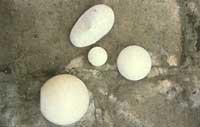
In the rainy season, temperatures are cooler and incubation exceeds 2 months. Instead, in the dry season it is shorter.
The chicks leave the egg shell and go to the beach by drilling a tunnel upwards. This occurs at night and is guided by the light that gives water to the sea.
The indigenous Galibi (from the Tileuyu language of the Karib group) were those who in the 1960s showed these beaches for the first time to some scientists. Indians and leather turtles have always used the same beaches. In the Galician culture sea turtles are of great importance, they are the basis of many myths and beliefs.
KAWANA research and protection campaigns have been conducted annually since its inception in the 1970s. (Kawana: leather turtle in the Tileuyu language).
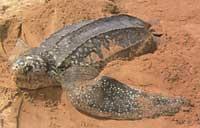
Although at that time the hunters killed turtles of 500 kilos to sell 4 or 5 kilos of meat in the market of Cayenne, now it does not happen, because sea turtles are protected. Likewise, the collection of eggs to eat or sell (in Cayenne or Paramaribo) have disappeared practically in their entirety.
The main results of the protection campaigns have been the following.
Research has also yielded very important results, which need to be known at the level of protection. The mandatory links between research and sponsorship are underlined.
The first objective was to know the number of turtles that reach the beaches of Guyana and Suriname. To do this, the first step was to see which beaches they use.
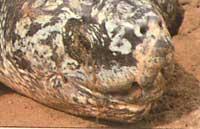
The coasts of Guyana are very variable. The land and mud of the Amazon River are dragged north by a sea stream to Venezuela. As a result, cycles of beaches, erosion, mangroves (coastal forest) and slums appear on the coasts of Guyana. The beaches of the Atlantic Ocean do not therefore remain for a long time as beaches. On the contrary, the beaches on the edge of Maroni (border river between Suriman and Guyana) are more sustainable as they are away from the sea stream.
The beaches near the mouth of Maroni are the most important for leather turtles.
Scientists soon discovered that the groups of females collected here are very large.
To these beaches turtles come to spawn from March to September, most in May and June (therefore, in the rainy season). During a night of these months you can see hundreds of females on the beaches. On the night of June 27, 1988, 957 turtles climbed to the beach of Ya:lima:poko!
To study its population dynamics and make the stories seriously, it was necessary to mark individually (to rule out the risk of counting two or three times the same copy).
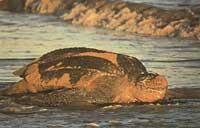
Each turtle is placed a metal mark on a back leg. This brand includes a number and address to tell if someone finds it. In addition to marking, other data are taken from each: length, width, location of wounds, etc. As witnesses to the fights that occur at sea, you often see the legs semi-meals or tooth remains on the head. The only preys of these leather turtles are orcas and large sharks.
These markup jobs have taught important things that no one knew:
Females do not come every year to these beaches to spawn. They have a cycle of two or three years. We don't know what they do in that interval. A female marked one year in Guyana was seen the following year in Ganan, across the Atlantic Ocean. But this seems an isolated case. Probably these turtles do not land (and therefore reproduce) for a year or two years.
In 1973 the number of females coming here was considered to be 15,000. Considering this cycle of two or three years, counting about fifteen thousand females in 1988 means that the figure is much higher than this.
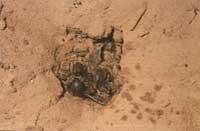
Turtles follow another cycle. Each female, during the laying, disembarks 7 or 8 times at the laying of the eggs: each of them remains on the coast for two or three months and disembarks every ten days. At one time of the year each female lays about 600 eggs.
After all the positions, it has been known that thanks to the brands the females are heading north, reaching some to the United States. Although it is difficult to know these migrations, they can certainly make long trips at sea.
We know that the most important food of adults is jellyfish. Every autumn, leather turtles can be seen feeding them in the European area. On the contrary, it is unknown what the offspring eat (up to 6 years). No one can indicate where and how they live. Your research is much more complicated, as you can't mark the smallest and almost never seen or captured an average size.
Another important field of research is eggs buried on the beach for 2 months. To investigate the future of the species it is necessary to collect data such as the rate of reproduction and sexual distribution.
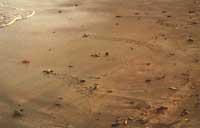
The beaches of Guayana are very humid and the waters of the interior marshes rot a lot of egg. The beaches are short and narrow, so the concentrations of females disembarked at the setting are usually very high. When drilling, the risk of destruction of another existing nest is high. It seems that the biggest destructive nests in May and June are the same leather turtles!
Tidal and erosion also emerge and destroy certain positions.
The offspring are in grave danger at the exit of the hole and at the exit to the sea. The biggest predators are undoubtedly the dogs of the Indian peoples. At dawn, local vultures ( Coragyps atratus) also feed on turtles. Some crabs also feed on them, but there is no other mammal here because of the human being.
Some fish (large catfish and sharks) after reaching the water are the following turtle predators.
Taking into account all of them, on average, 4 out of 100 eggs will deliver on the beach a breeding that will reach the water. This is the approximate average and more research will be needed to determine and measure the effects of each factor.
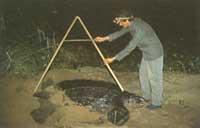
In 1980, given the importance of these beaches for the species, a program was proposed to artificially heat eggs and release young to improve breeding rates. To do this they were built in the same town of Ya:lima:po some hueverías and the first works were carried out to achieve greater rates of generation.
At night the eggs are collected at the time of laying. Once the rare eggs are removed and cleaned with water and antiseptics, they are inserted into a container in the egg. They are controlled weekly for two months, eliminating those that rot and analyzing the dead.
A few days before birth they are buried in a container full of sand so that they can form in the natural environment. Once they appear on the sand, they release and take care on the real beach so that they can reach the sea without obstacles.
With this technique, which was discovered after many attempts, 60 or 70 children of 100 eggs reach the sea.
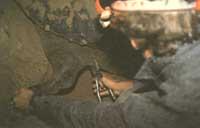
This work has given very interesting results: as in other reptiles, during embryonic growth an external factor (temperatures) can alter sex.
This can occur when the embryo is between 20 and 30 days old. In this interval, if the average temperature is higher than 29.5 °, females or males will leave.
So some females who come to this beach are genetically males. That creates serious headaches at the research level in genetics and biology!
As a result, two hueverías have been developed, one (heated) for the extraction of females and one for the extraction of males.
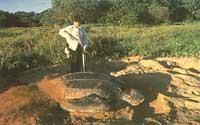
During incubation two moments appear with high mortality rates.
On the one hand many eggs rot. Probably due to external factors, such as temperature and humidity. At the start it is increasing and in August it reaches very high rates.
On the other hand, when the embryo is between 60 and 70 days (therefore, it has been born or has not been born) it must overcome a critical phase to remain alive. The mortality rate is very high in April and then decreases. No explanation has yet been found.
These phenomena are of great importance for decision-making about the future of this species.
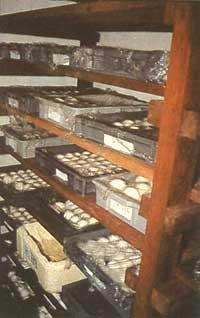
How many females should be made? How many males? How many eggs must be collected and how many puppies must be released?
It is very difficult to answer these questions.
The right way would be to investigate what happens on the beaches and build on those results.
The following points stand out:
- between March and September the temperature of the beaches changes. If the eggs laid at the beginning of the season (in the rainy season) give males, the last (in the dry season) give females.
- many sets are destroyed by moisture, tidal and erosion.
- The turtles themselves can be the biggest settlers.
- we know if the reproductive rates of the first and last female positions are the same or not.
- Are reproductive rates so good for females who have undergone a sex change?
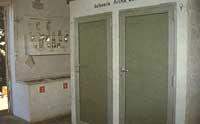
These points demonstrate the difficulty of this topic.
Today of the hueverías are extracted some 5,000 young per year. In 1988, the beaches had 4 million eggs. The results of the hueverías do not have much importance in this respect for lack of money, but they do emphasize that the support and the investigation must be united with each other, or rather, that nothing of what is not known is protected.

Gai honi buruzko eduki gehiago
Elhuyarrek garatutako teknologia



